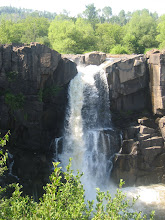The American Indian community is experiencing demographic shifts. Population aging, population growth, and population diversity, are creating fresh challenges for organizations and service providers. In addition, American Indian population dispersion throughout the city and into the suburbs/exurbs is also creating interesting challenges. These shifts will require thoughtful solutions to the question, "How does the American Indian community preserve and maintain a cultural and geographic sense of community and identity?" or can it?
I believe one area to pay particular attention to is how and where we as a community choose to invest our resources and energy. Critical to our future sense of community and our ability to preserve it rests in our future capacity. One area that we tend not to think about is business, development and finance. Local American Indian community investment in business, development and financial activities is, by and large, miniscule. Instead, the primary employers/players in the American Indian community are social service non-profits and government. Indian jobs, income and quality of life are connected to focusing on deficits and poverty within the community. The result is a weak economy based on providing services to fill gaps, creating long-term dependency on those services--both for those who provide the services and those who receive them.
At the same time, significant numbers of American Indian people wish to remain(live and/or work) within their historic/recognized community area. There remains a strong desire to preserve and strengthen community and place for American Indians, and yet two challenges persist: A lack of strategic alignment and investment among American Indian non-profits and their leaders to work on projects that leverage their collective assets to truly produce poverty reduction outcomes; and a lack of community and economic development capacity to create the new prosperity envisioned by many Indian residents, businesses and organizations.
Nationally, the Minneapolis American Indian community is a respected and known model of urban American Indian development and activity-- a place where American Indian people have created a sense of community identity and place(despite broken relocation promises). Much of that work has been done through non-profit organizations including the Indian Health Board, Little Earth of United Tribes, American Indian OIC, MIGIZI Communications, Minneapolis American Indian Center, Heart of the Earth School, Upper Midwest American Indian Center, American Indian CDC , American Indian Business Development Corporation(no longer around) and many, many more.
Today, as South Minneapolis, particularly the neighborhoods of Phillips, Ventura Village, Powderhorn, and Seward undergo significant growth as a result of the light rail and downtown development, the American Indian community is, for the most part, not a viable or respected player at the development table. This must change. An organized effort is required to develop and bring Indian economic power into the ongoing stream of development opportunities.
Further, the metro area offers less land and and housing development opportunities at an affordable price that will benefit the American Indian population in the future. The positioning of new enterprises within the American Indian community needs to occur soon to generate gain on investment for existing and new opportunities. Significant benefit to the Minneapolis American Indian population will be realized only if an asset building strategy is part of the changes that are currently on there way. Failure to act will result in exacerbated poverty and lack of opportunity with no change in the current conditions.



